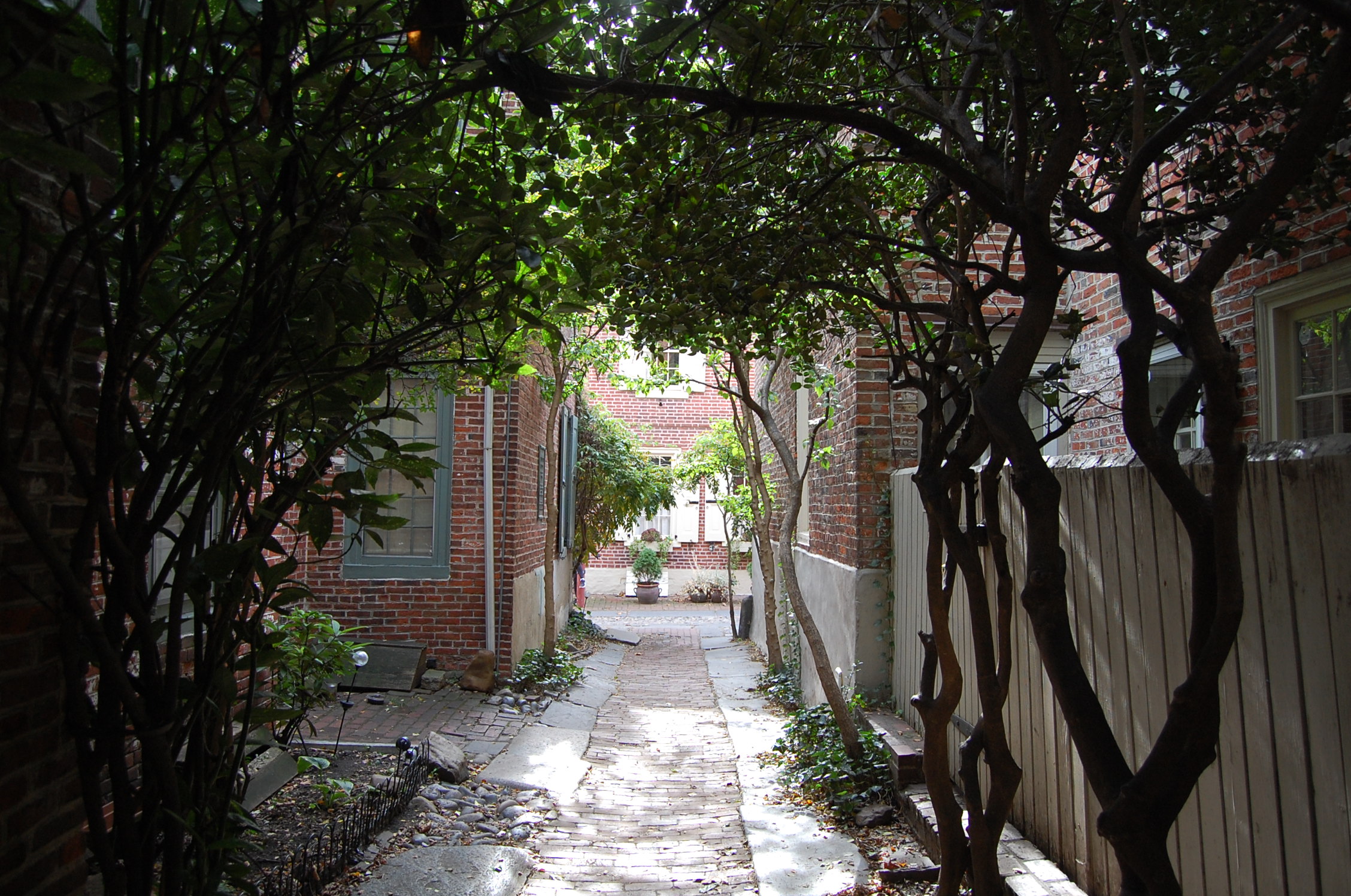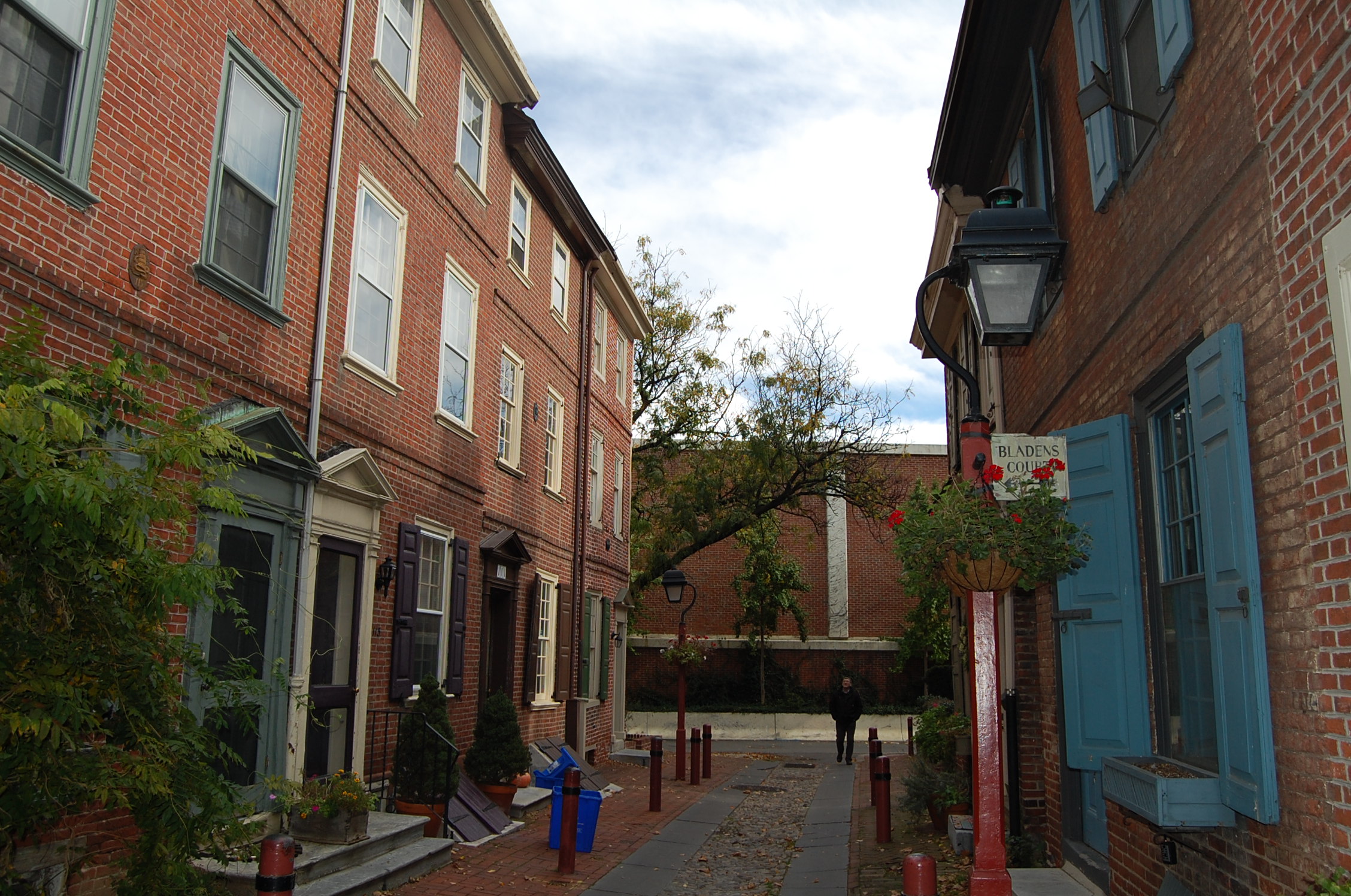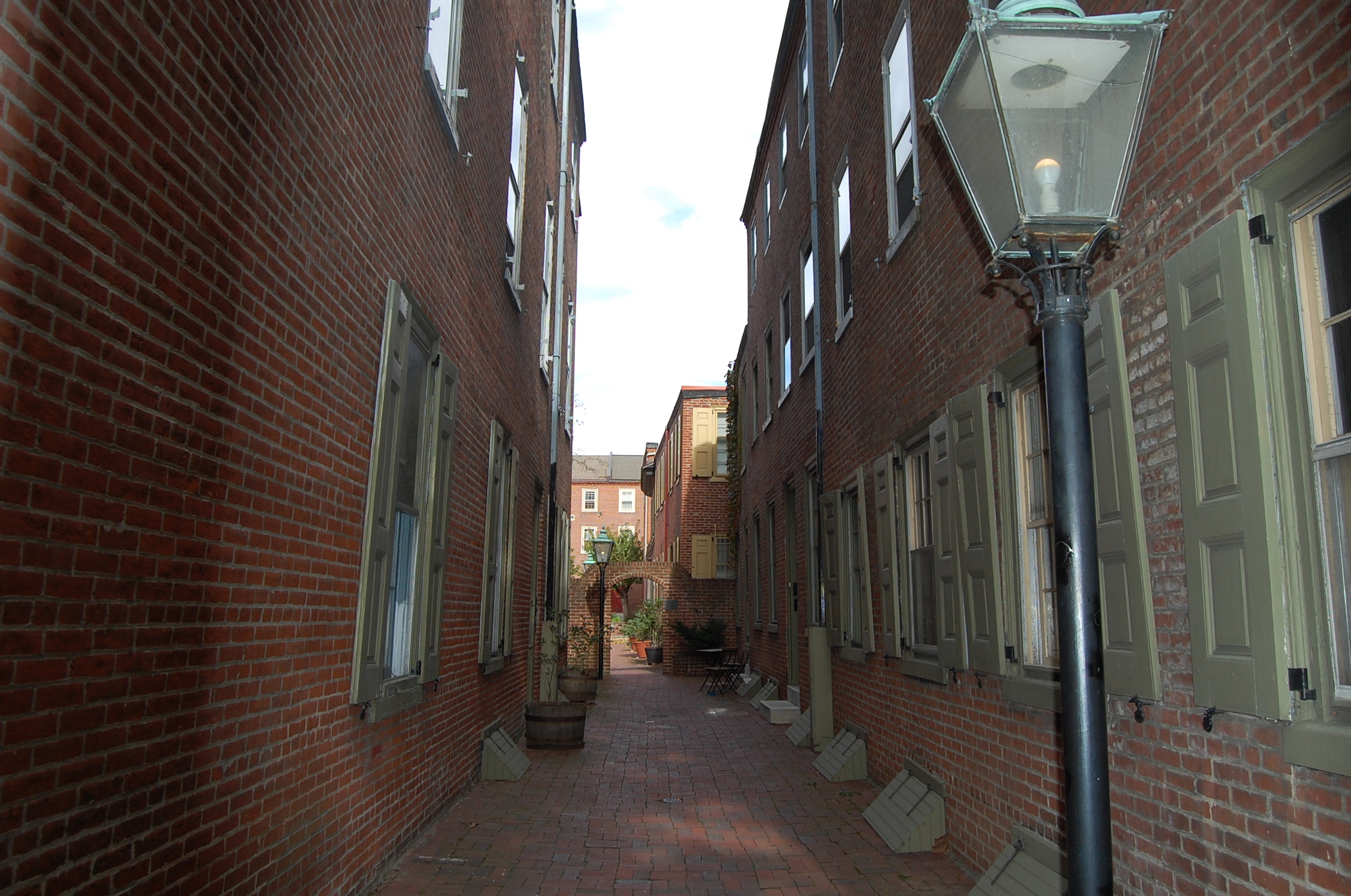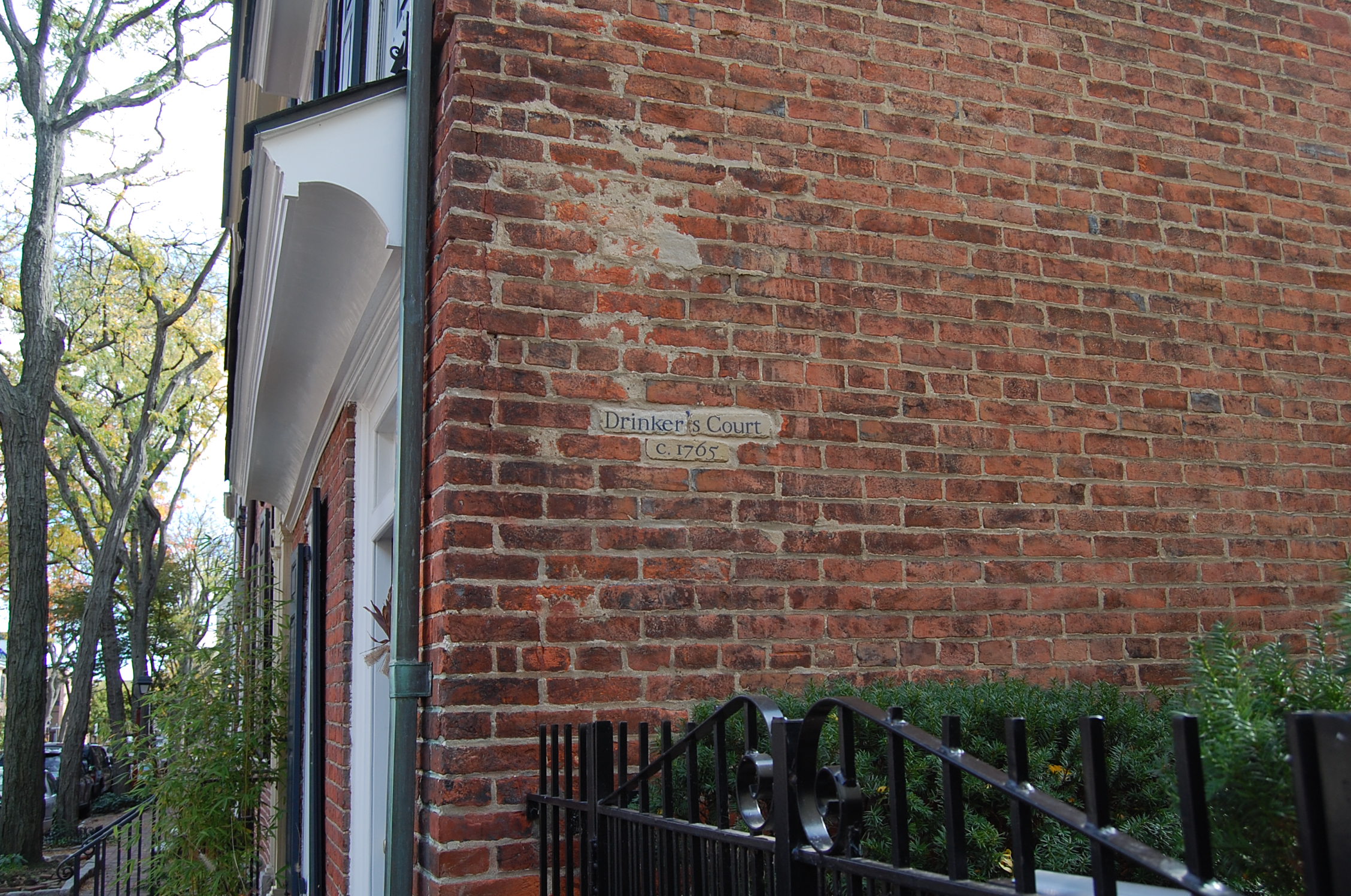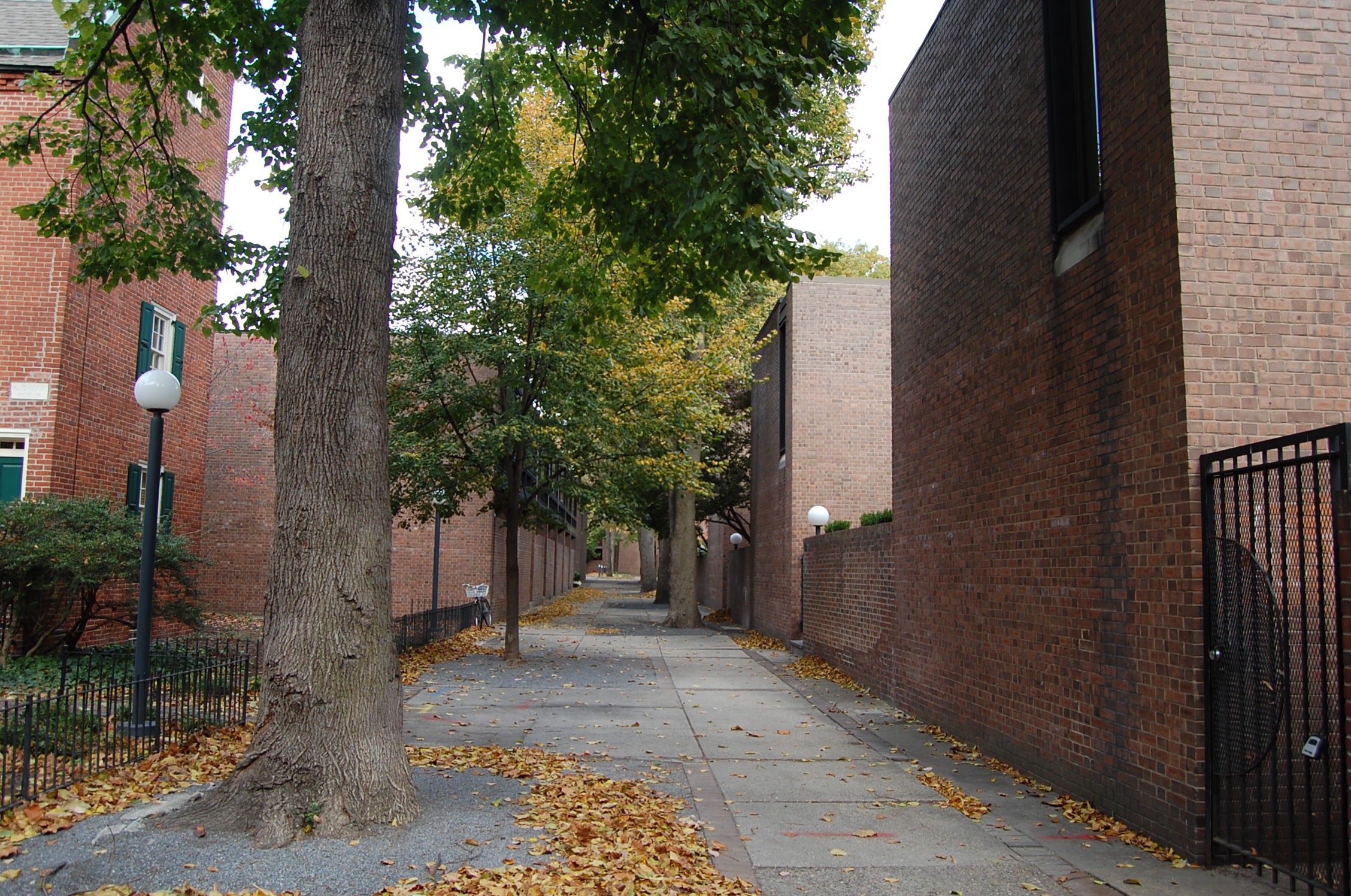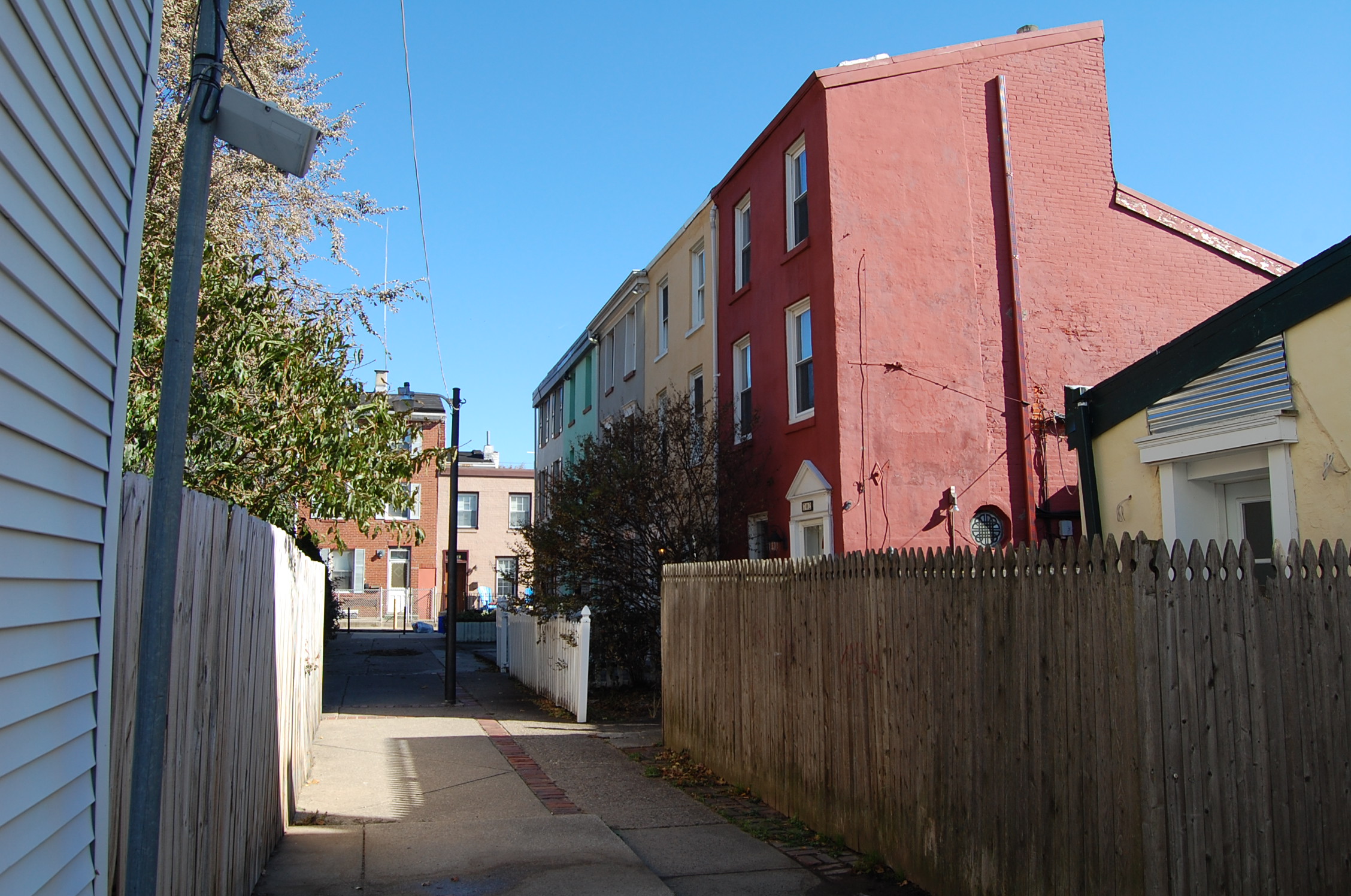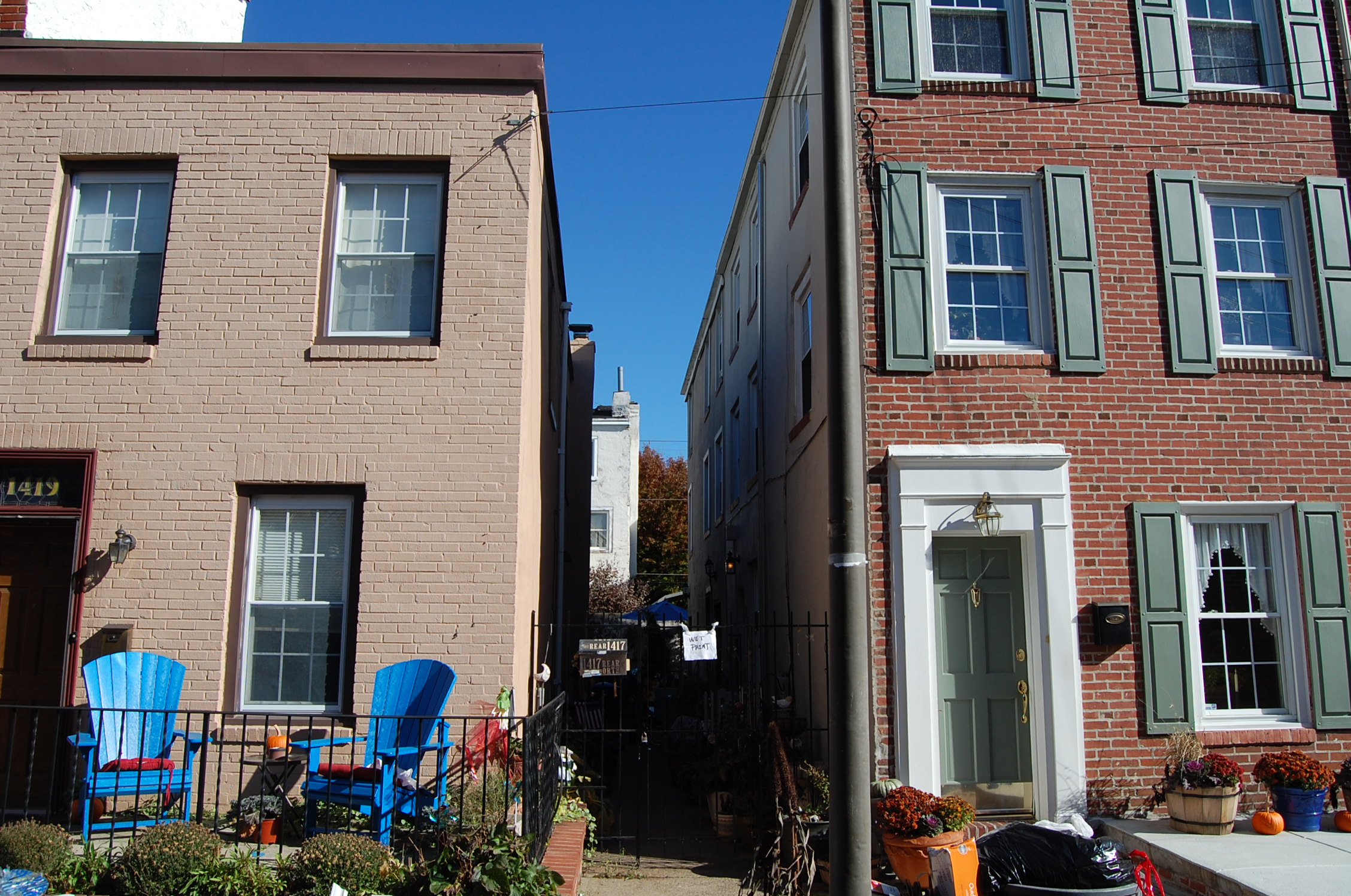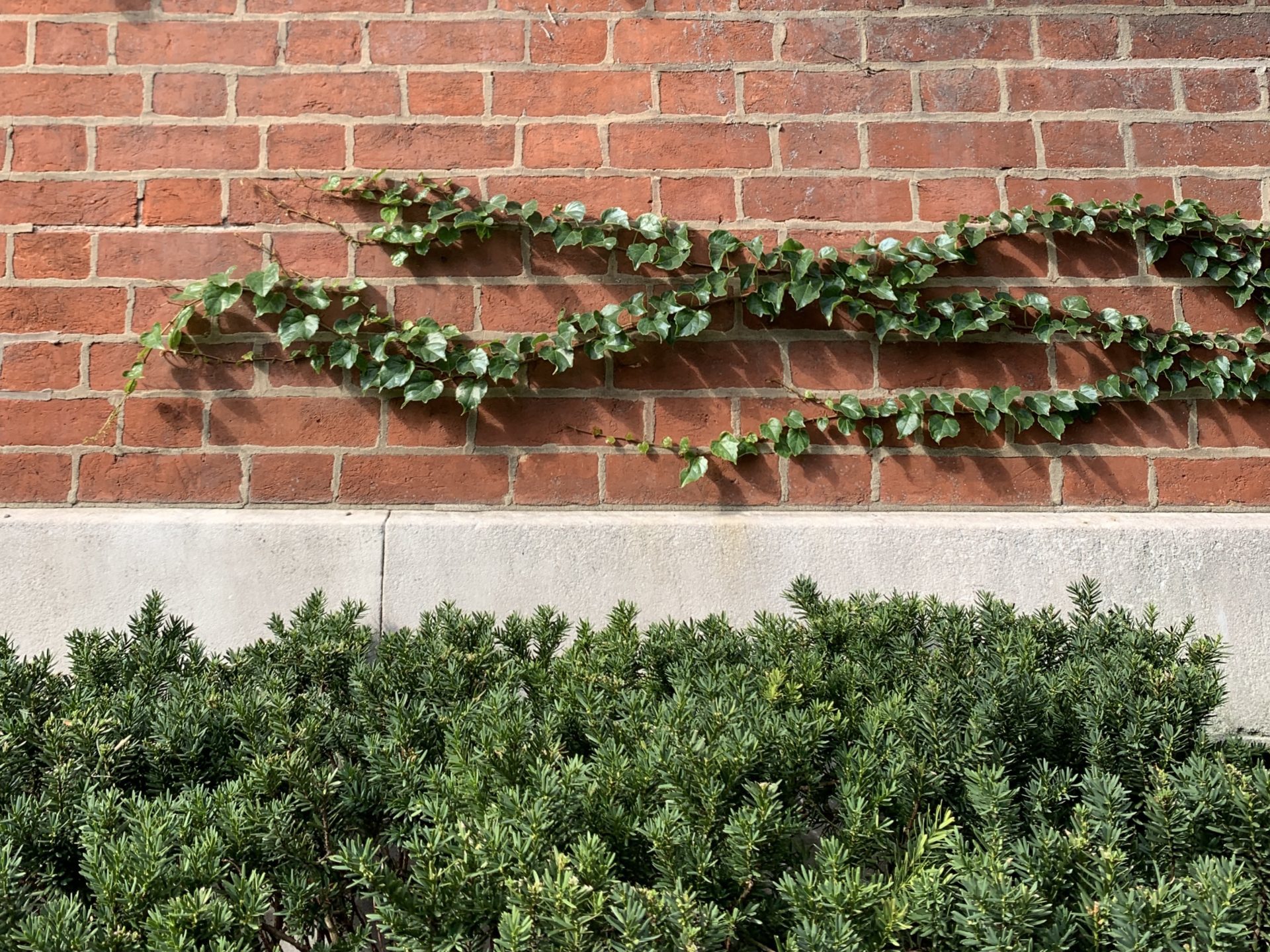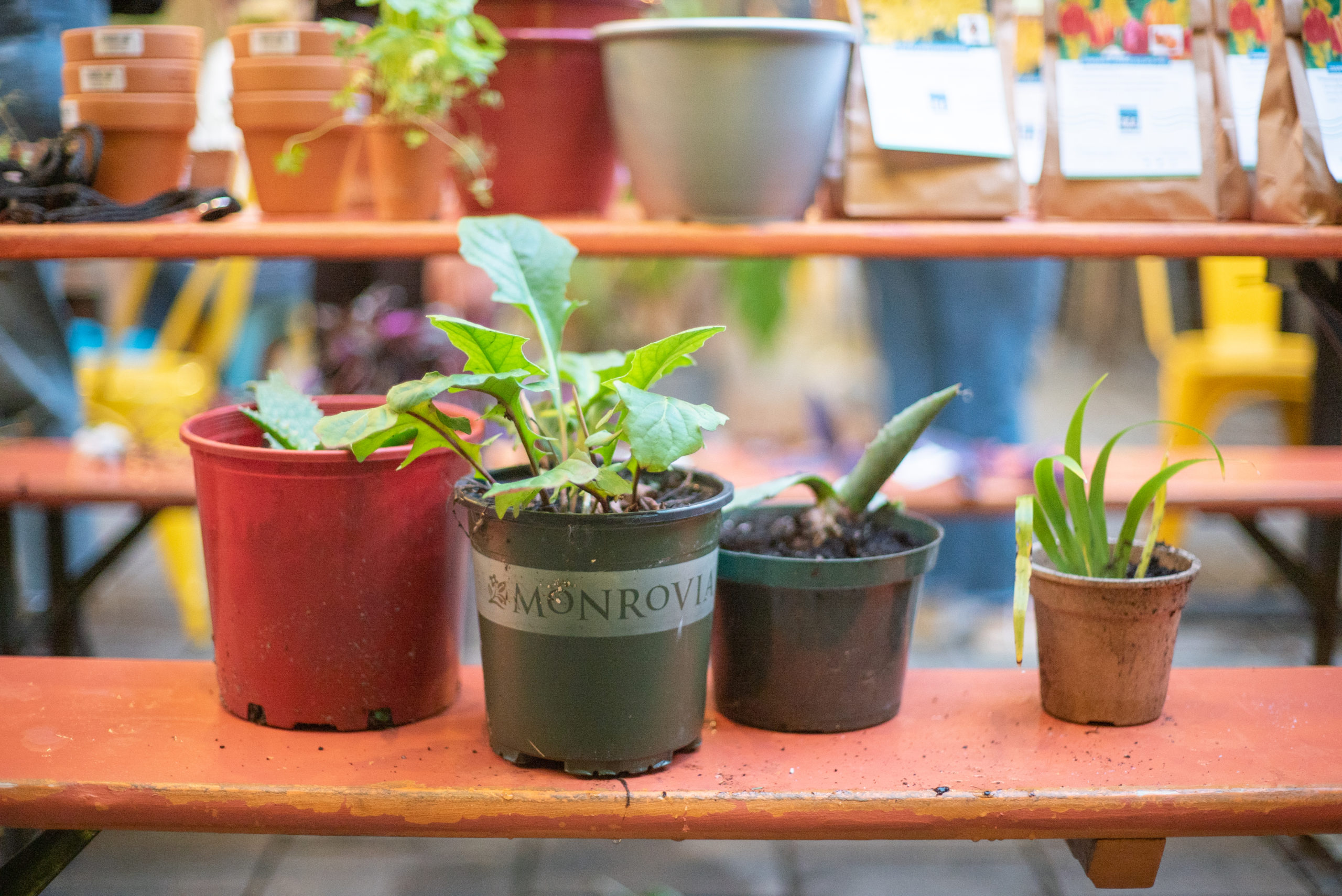General
The Secret Life of Buildings: Residential Courts
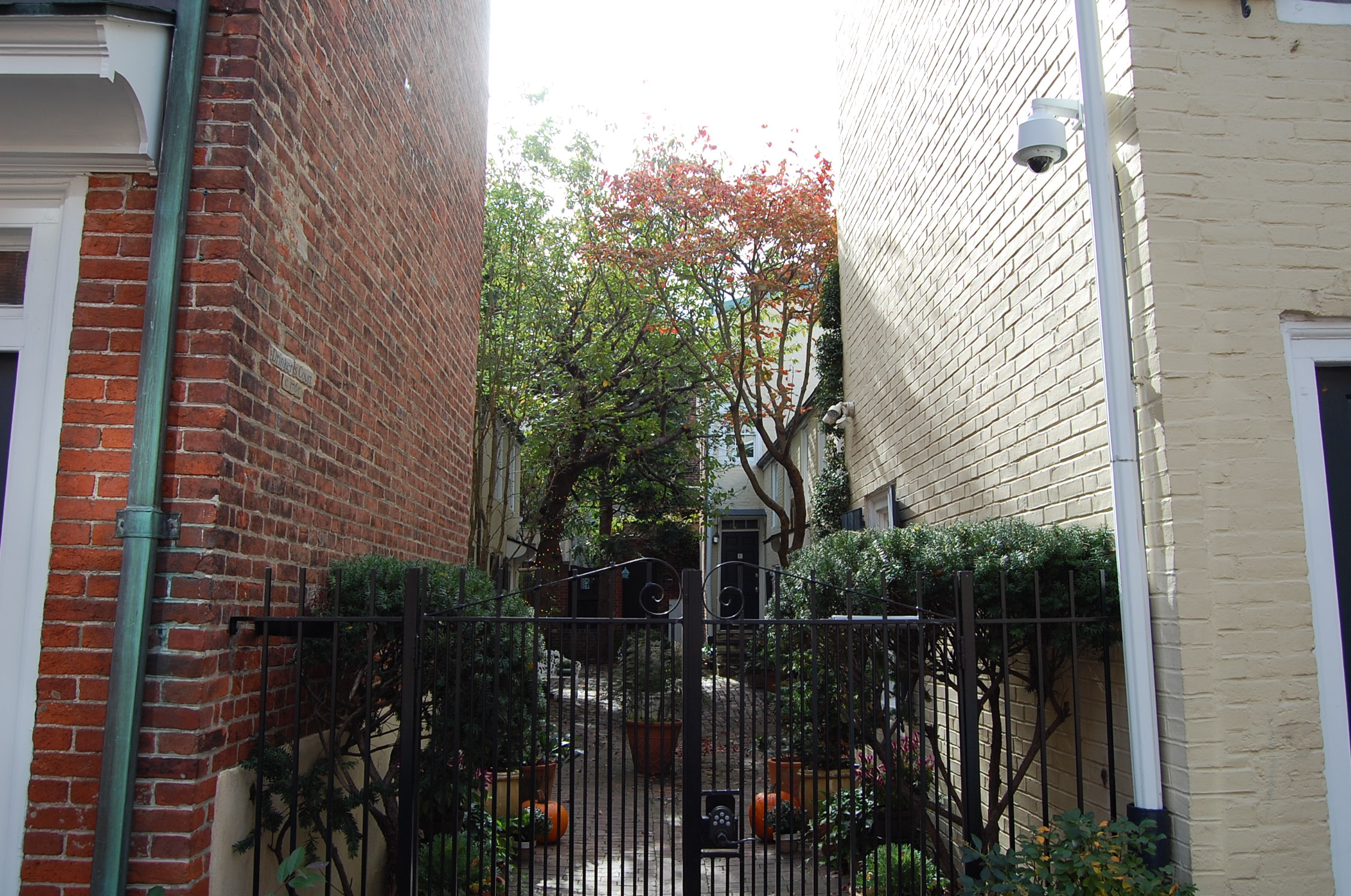
In our last Secret Life of Buildings post we tackled trinity homes. What we didn’t get around to mentioning are the residential courts that many houses of this style are nestled into. Residential courts are the smallest of the small streets, cartways, and alleyways that were carved out of William Penn’s Greene Country Towne in the 18th and 19th centuries. They are so small, in fact, that these dead end nooks are pedestrian only, often with an communal courtyard space.
Often gated and consisting of anywhere from three to twelve homes on average and typically (though not always) bandbox style, these petite residential courts are yet another distinctive feature of Philadelphia’s urban design and built environment.
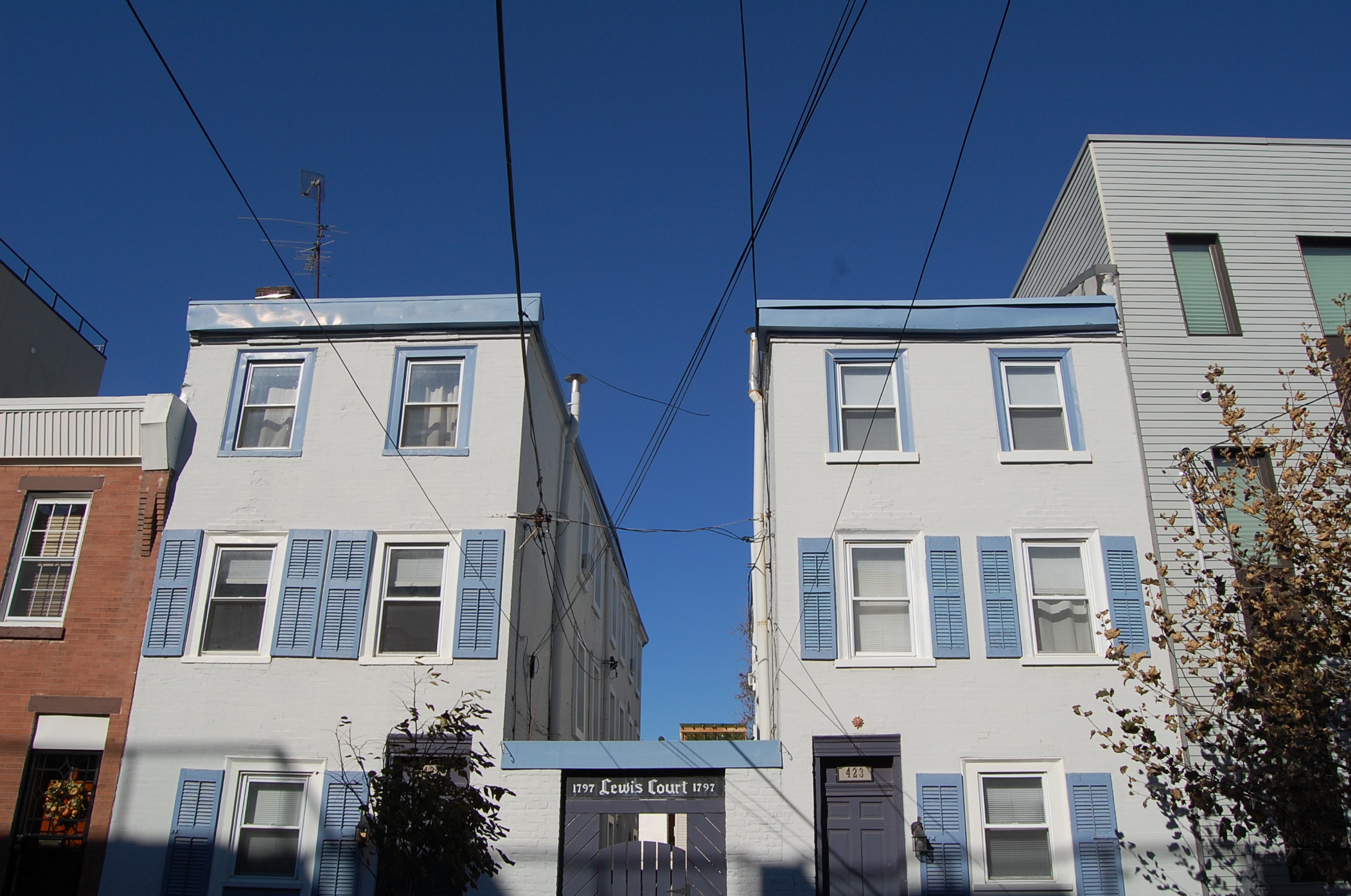
Unfortunately, fewer of these residential court have survived into the 20th century than the trinity homes of our earlier exploration. The small scale, dense houses were historically built for craftsmen and factory workers, and as these industries faded in the 20th century, so did much of the housing.
As a city that cherishes history, however, Philadelphia held on to a handful of these residential courts. Some might sit right in your neighborhood without you ever having noticed since they’re such hidden secrets of the city. A few of the most architecturally or historically pertinent courts have even made their way onto the Philadelphia Register of Historic Places. Among those are Loxley and Bladen’s Courts in Old City and Drinker’s and Bell’s Courts in Society Hill.
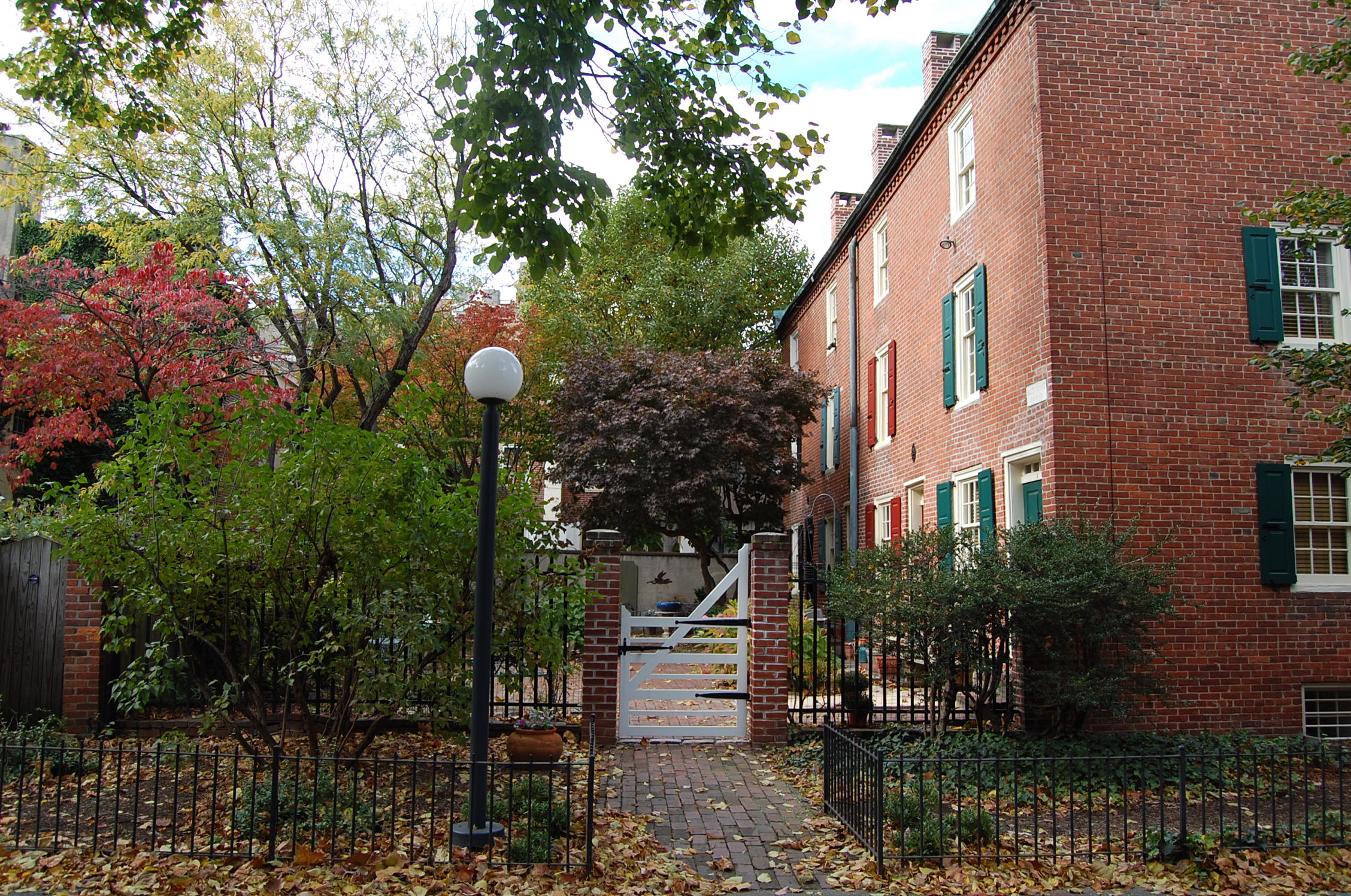
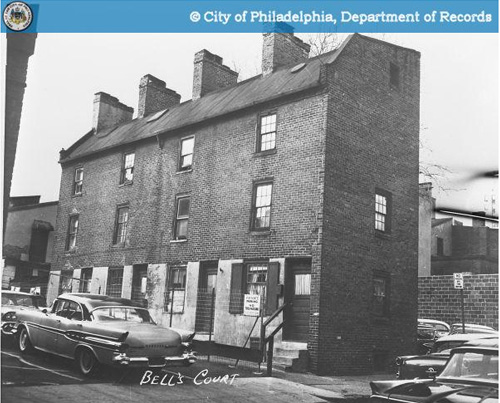
The common form that the residential court takes is with one or two larger houses fronting a main street with an attached row of trinities behind accessed by an alleyway between the two or beside the one street fronting properties.
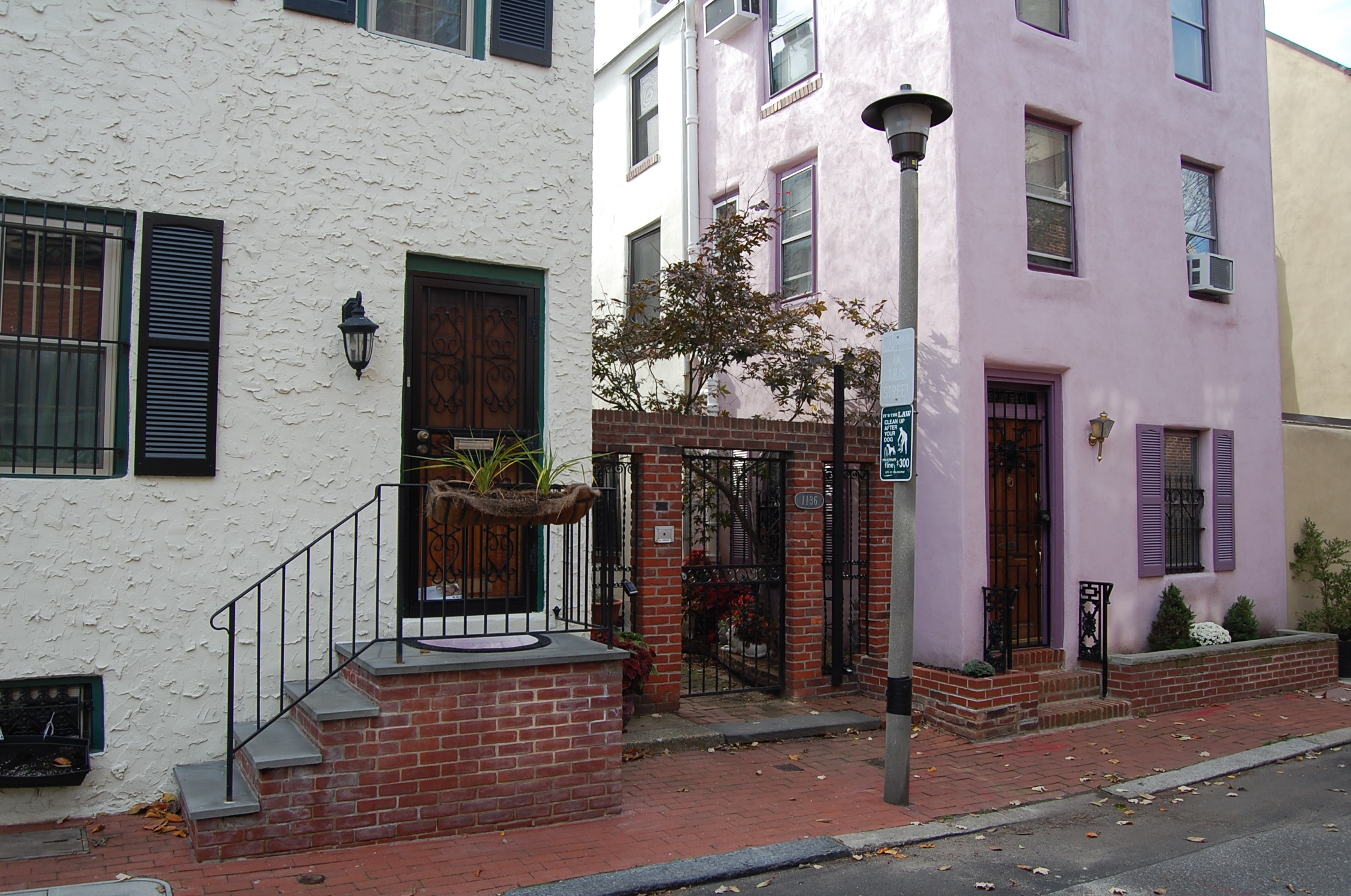
While some of the most iconic Philadelphia residential courts still standing today are in Old City, Society Hill, Queen Village, and Rittenhouse, this housing type was at one time even more common in neighborhoods like Northern Liberties, Fishtown, and Kensington. The reason for this was mainly that the courts were built to house factory workers efficiently and close by to the workplace which were frequently located in these River Wards neighborhoods.
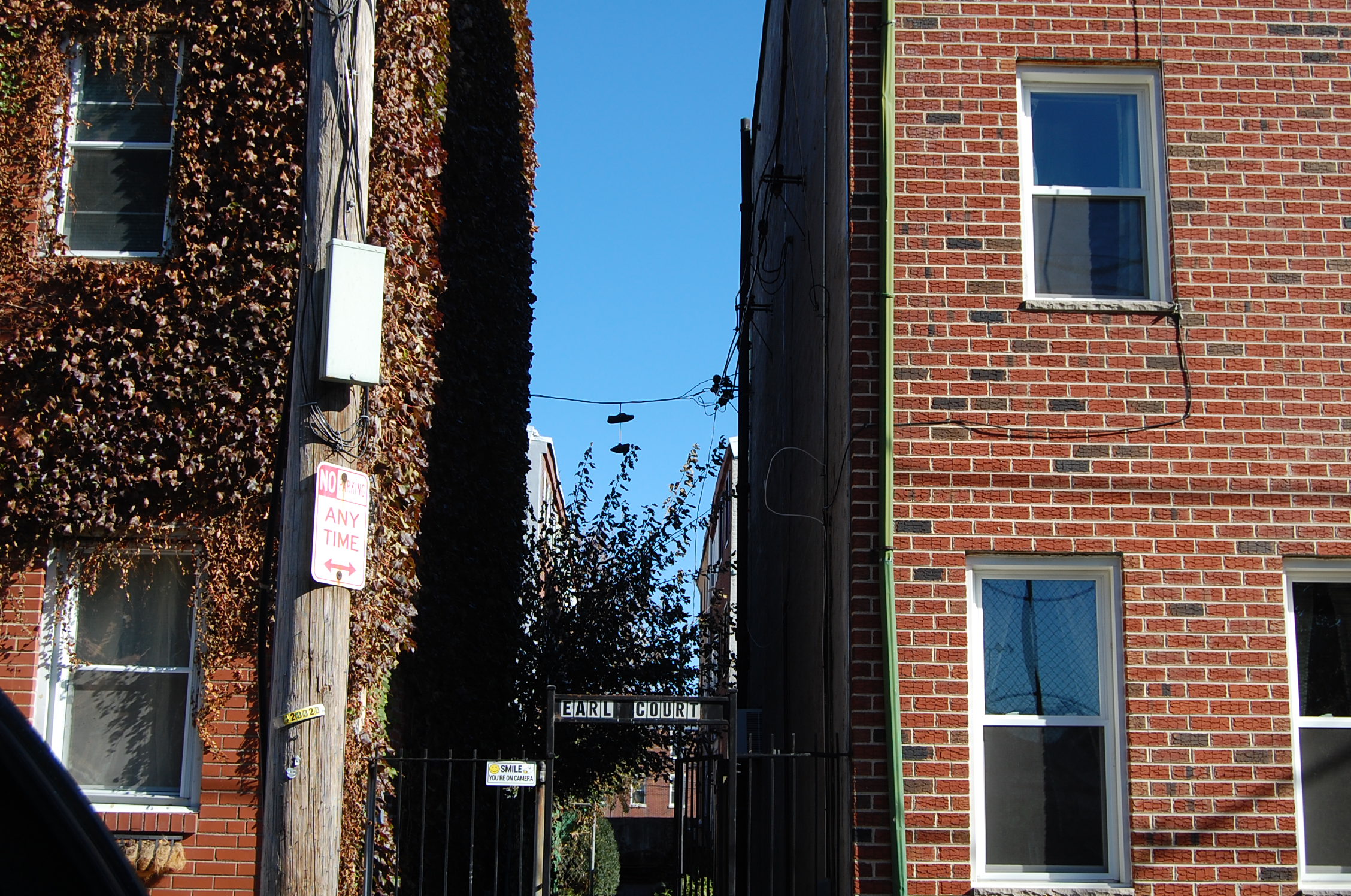
Many of the residential courts in these neighborhoods just northeast of Center City vanished after the industrial age and in the wake of the construction of I-95 between 1959-1979. While these homes were not necessarily notable for their architectural style since they were of a straightforward and unadorned construction, they are significant for their representation of a local housing type and as a distinct iteration of 19th century urban design in Philadelphia. We’ve touched on a few residential courts in prior blog posts, like our Blocks We Love on 700 Miller Street and 700 North Bodine Street.
Not only are these homes desirable for their historic connection, original features, and quiet, private space that is separated from the main street, they also are uniquely Philadelphia. Many of the courts are so obscured within the city’s blocks many people don’t even realize they exist. As a hidden secret of Philadelphia, the residential courts tell a story about the city’s early development, industrial roots, and distinction as a city of streets of rowhomes within streets of rowhomes within streets of rowhomes.
